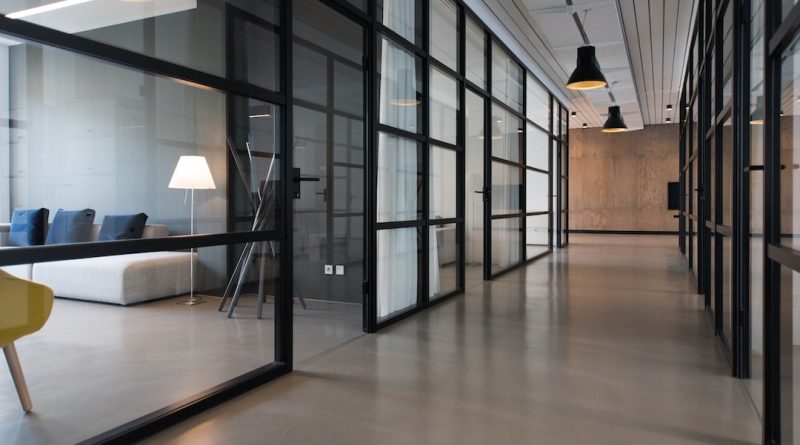Shedding Light on Office Productivity: The Importance of Proper Lighting in the Workplace
Lighting plays a crucial role in the workplace, impacting everything from productivity and employee health to morale and creativity. A well-lit office can create a positive and energizing environment, while poor lighting can lead to decreased productivity, eye strain, and even physical and mental health issues. In this article, we will explore the link between lighting and productivity, the effects of poor lighting on employee health and well-being, the benefits of natural light in the workplace, lighting design tips for a productive office space, the role of lighting in reducing eye strain and fatigue, the impact of lighting on employee morale and motivation, how to choose the right lighting fixtures for your office, the connection between lighting and creativity, the importance of proper huuly lighting for workplace safety, and the future trends and innovations in office lighting.
The Link Between Lighting and Productivity in the Office
Numerous studies have shown that lighting has a significant impact on productivity in the office. Brighter lighting has been found to increase alertness and focus, leading to improved performance on tasks. On the other hand, dim or inadequate lighting can cause drowsiness and reduce concentration levels. A study conducted by the American Society of Interior Designers found that employees working in well-lit offices were 23% more productive than those working in poorly lit spaces.
In addition to brightness, the color temperature of light also plays a role in productivity. Cool white light with a higher color temperature (around 5000K) has been found to promote alertness and focus, while warm white light with a lower color temperature (around 3000K) can create a more relaxed atmosphere. It is important to strike a balance between these two types of light depending on the nature of work being done in the office.
How Poor Lighting Can Affect Employee Health and Well-being
Poor lighting in the workplace can have negative effects on both physical and mental health. Inadequate lighting can cause eye strain, headaches, and fatigue, leading to decreased productivity and increased absenteeism. It can also contribute to musculoskeletal disorders such as neck and back pain, as employees strain to see their work in dimly lit conditions.
Furthermore, poor lighting can have a negative impact on mental health. Studies have shown that exposure to bright light during the day can help regulate circadian rhythms and improve sleep quality. On the other hand, insufficient exposure to natural or bright light can disrupt these rhythms, leading to sleep disturbances and mood disorders such as depression and anxiety.
The Benefits of Natural Light in the Workplace
Natural light has numerous advantages over artificial light in the workplace. Exposure to natural light has been found to improve mood and well-being, increase alertness and focus, and reduce stress levels. A study conducted by Northwestern University found that employees working in offices with windows received 173% more white light exposure during work hours and slept an average of 46 minutes more per night compared to those without windows.
Natural light also provides a more accurate representation of colors, which can be beneficial for tasks that require color accuracy such as graphic design or product development. Additionally, natural light can help regulate circadian rhythms and improve sleep quality, leading to better overall health and well-being.
Lighting Design Tips for a Productive Office Space
When designing office lighting, there are several factors to consider. First and foremost, it is important to ensure that the lighting is adequate for the tasks being performed in each area of the office. Different tasks may require different levels of lighting, so it is important to provide adjustable lighting options or task-specific lighting fixtures.
In addition to brightness, the color temperature of light should also be taken into account. As mentioned earlier, cool white light promotes alertness and focus, while warm white light creates a more relaxed atmosphere. It is important to strike a balance between these two types of light depending on the nature of work being done in each area of the office.
Another important factor to consider is the distribution of light. It is important to ensure that the lighting is evenly distributed throughout the office space to avoid glare and shadows. This can be achieved through a combination of overhead lighting, task lighting, and natural light sources such as windows or skylights.
The Role of Lighting in Reducing Eye Strain and Fatigue
Poor lighting can cause eye strain and fatigue, leading to decreased productivity and increased discomfort for employees. Glare, flickering lights, and inadequate lighting levels can all contribute to eye strain and fatigue. It is important to minimize glare by using anti-glare screens or filters on computer monitors and providing adjustable lighting options to reduce brightness levels.
Flickering lights can also cause eye strain and fatigue. This can be caused by outdated or faulty lighting fixtures, so it is important to regularly maintain and replace lighting fixtures as needed. Additionally, providing task-specific lighting fixtures can help reduce eye strain by providing adequate lighting for specific tasks.
The Impact of Lighting on Employee Morale and Motivation
Lighting has a significant impact on employee mood and motivation. Bright, well-lit spaces have been found to create a positive and energizing work environment, leading to increased morale and motivation. On the other hand, dim or inadequate lighting can create a gloomy atmosphere, leading to decreased morale and motivation.
In addition to brightness, the color temperature of light also plays a role in employee mood and motivation. Cool white light has been found to promote alertness and focus, while warm white light can create a more relaxed atmosphere. It is important to strike a balance between these two types of light depending on the nature of work being done in each area of the office.
How to Choose the Right Lighting Fixtures for Your Office
When choosing lighting fixtures for your office, there are several factors to consider. First and foremost, it is important to ensure that the lighting fixtures provide adequate lighting for the tasks being performed in each area of the office. Different tasks may require different levels of lighting, so it is important to choose fixtures that can be adjusted or provide task-specific lighting options.
In addition to brightness, the color temperature of light should also be taken into account. As mentioned earlier, cool white light promotes alertness and focus, while warm white light creates a more relaxed atmosphere. It is important to strike a balance between these two types of light depending on the nature of work being done in each area of the office.
Another important factor to consider is energy efficiency. Choosing energy-efficient lighting fixtures can not only help reduce energy costs but also contribute to sustainability efforts. LED lighting fixtures are a popular choice for office spaces due to their energy efficiency and long lifespan.
The Connection Between Lighting and Creativity in the Workplace
Lighting can play a significant role in stimulating creativity and innovation in the workplace. Studies have shown that exposure to natural light can enhance creativity and problem-solving abilities. Natural light provides a more accurate representation of colors, which can be beneficial for tasks that require color accuracy such as graphic design or product development.
In addition to natural light, creative lighting designs can also inspire creativity in the workplace. Unique and innovative lighting fixtures or installations can create a visually stimulating environment that encourages out-of-the-box thinking. For example, using colored lights or dynamic lighting effects can create a vibrant and inspiring atmosphere.
The Importance of Proper Lighting for Workplace Safety
Proper lighting is essential for maintaining a safe work environment. Inadequate lighting can increase the risk of accidents and injuries, as employees may not be able to see potential hazards or obstacles. It is important to ensure that all areas of the office are well-lit, including hallways, stairwells, and emergency exits.
In addition to brightness, the color temperature of light can also impact workplace safety. Cool white light has been found to improve visual acuity and depth perception, which can help employees navigate their surroundings more safely. It is important to strike a balance between cool white light and warm white light depending on the nature of work being done in each area of the office.
The Future of Office Lighting: Trends and Innovations
The future of office lighting is filled with exciting trends and innovations. One emerging trend is the use of circadian lighting, which mimics the natural progression of daylight throughout the day. Circadian lighting systems can help regulate circadian rhythms and improve sleep quality, leading to better overall health and well-being.
Another trend is the integration of smart lighting systems into office spaces. Smart lighting systems can be controlled through mobile apps or voice commands, allowing employees to adjust lighting levels or color temperature according to their preferences. These systems can also be programmed to automatically adjust lighting based on occupancy or time of day, further enhancing energy efficiency.
In conclusion, lighting plays a crucial role in the workplace, impacting everything from productivity and employee health to morale and creativity. A well-lit office can create a positive and energizing environment, while poor lighting can lead to decreased productivity, eye strain, and even physical and mental health issues. By considering factors such as brightness, color temperature, distribution of light, and energy efficiency, employers can create a well-lit and productive office space that promotes employee well-being and success. Additionally, by staying informed about emerging trends and innovations in office lighting, employers can ensure that their workspaces remain up-to-date and optimized for productivity and employee satisfaction.
Looking for an article on office lighting? Check out this informative piece on the benefits of natural light in the workplace. It discusses how incorporating natural light into office spaces can improve productivity, enhance mood, and reduce eye strain. To learn more, click here.


